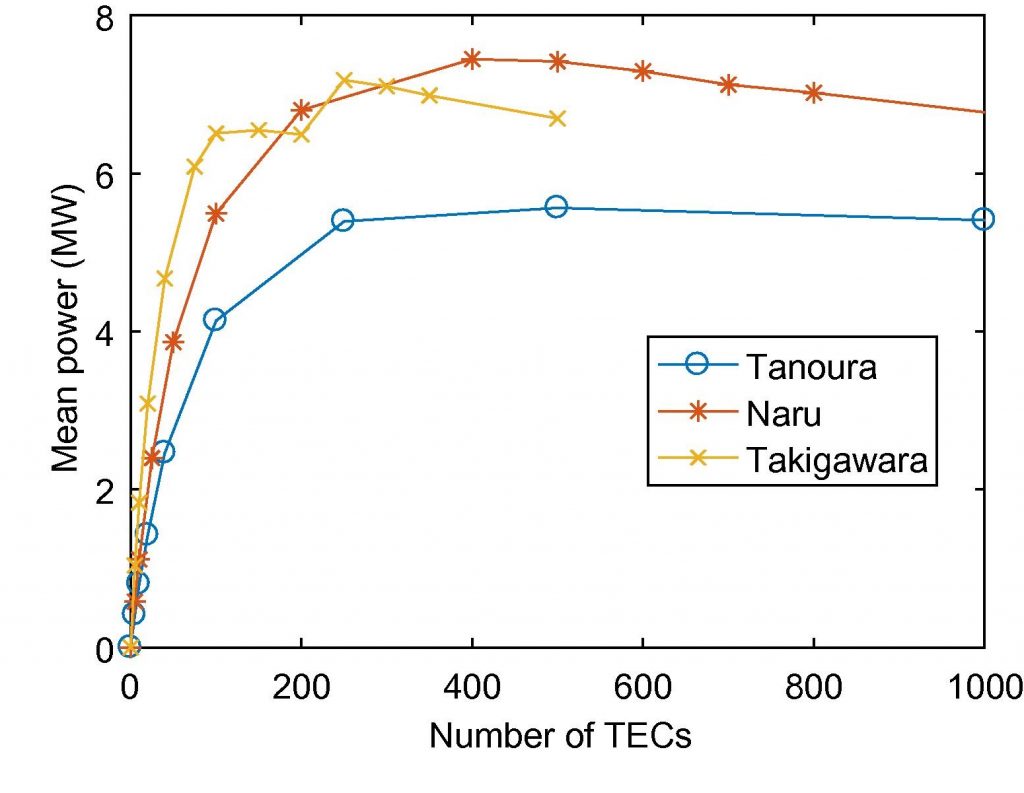I’ve had two publications appear online in the last few weeks, in the opposite order to that in which I actually did the work. They have a lot in common, using similar methods in different locations, so I thought I’d write about them together.
The most recent is my second journal article as lead author, and one that I’m quite proud of. It covers the work that I did in Japan last year, and in the months after returning, on the tidal energy resource of the Goto Islands of Nagasaki Prefecture. We produced estimates of the amount of power that could be obtained – which is mostly of interest for the people planning tidal development in that archipelago – but of more general interest are the findings about inter-channel interactions. The Goto Islands have several parallel channels that could contain turbines. When this arrangement has been studied in other places, it has usually been found that putting tidal turbines in one channel causes flow to divert into the others, and hence that to reach the full potential for power we would have to put turbines in every channel. Goto doesn’t behave like that – instead, the channels have very little effect on each other – and in the paper we looked a little into why that is. My thanks are due, of course, to my co-authors on this work, both in Scotland and Japan.

Plot showing the mean power available from various numbers of turbines in the channels of the Goto Islands, using simplified M2 tides.
Just a few weeks ago I attended the EWTEC conference in Cork and presented this paper on Lashy Sound, which is a channel with strong tides in the Northern part of Orkney. In this work, I used very similar methods to those that were developed in Japan to look at the tidal resource – in this case, not for realistic turbine developments but in terms of the theoretical maximum available power if we didn’t care about things like environmental impact, or allowing ships through. Unsurprisingly, it looks like achieving this maximum yield would have some significant impacts. I also considered the more plausible scenario of a smaller tidal farm, similar to the 30MW one that has been planned for the area, and was able to show that its effects would be small and confined to Lashy Sound itself – something that’s important when other potential tidal energy sites are just a few km away in neighbouring channels.
Both of these papers are available for free at the links above, or at the publications page on this site.
